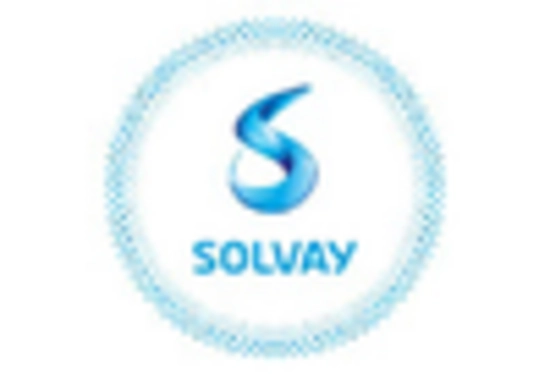Growing Focus on Sustainability
The Thermoplastic Polyamide Elastomer Market is increasingly aligning with sustainability initiatives as consumers and manufacturers prioritize eco-friendly materials. The demand for recyclable and biodegradable elastomers is on the rise, driven by regulatory pressures and consumer awareness regarding environmental issues. Companies are exploring bio-based alternatives to traditional thermoplastic polyamide elastomers, which could lead to a transformation in material sourcing and production processes. This shift not only addresses environmental concerns but also enhances brand reputation and market competitiveness. As sustainability becomes a core value for many businesses, the thermoplastic polyamide elastomer market is likely to adapt and evolve, fostering innovation in eco-friendly solutions.
Rising Demand in Automotive Sector
The Thermoplastic Polyamide Elastomer Market is experiencing a notable surge in demand, particularly from the automotive sector. This growth is driven by the increasing need for lightweight materials that enhance fuel efficiency and reduce emissions. In 2025, the automotive industry is projected to account for a significant share of the thermoplastic polyamide elastomer market, as manufacturers seek to replace traditional materials with advanced elastomers. These materials offer superior flexibility, durability, and resistance to chemicals, making them ideal for various automotive applications, including seals, gaskets, and interior components. The shift towards electric vehicles further amplifies this trend, as manufacturers prioritize materials that contribute to overall vehicle performance and sustainability.
Expansion in Consumer Goods Applications
The Thermoplastic Polyamide Elastomer Market is witnessing an expansion in applications within the consumer goods sector. As manufacturers increasingly focus on producing high-performance products, thermoplastic polyamide elastomers are being utilized in items such as footwear, sporting goods, and household appliances. The versatility of these materials allows for innovative designs and enhanced functionality, appealing to consumers seeking quality and durability. Market data indicates that the consumer goods segment is expected to grow steadily, driven by rising disposable incomes and changing consumer preferences. This trend suggests that the thermoplastic polyamide elastomer market will continue to thrive as manufacturers adapt to evolving market demands.
Technological Innovations in Material Science
Technological advancements in material science are significantly influencing the Thermoplastic Polyamide Elastomer Market. Innovations in processing techniques and formulations are enabling the development of new elastomer grades with enhanced properties, such as improved thermal stability and mechanical performance. These advancements are likely to open new avenues for applications across various industries, including electronics and medical devices. As companies invest in research and development, the market is expected to witness a proliferation of high-performance thermoplastic polyamide elastomers. This trend indicates a shift towards more specialized applications, potentially increasing the market's overall value and attracting new players.
Increased Investment in Infrastructure Development
The Thermoplastic Polyamide Elastomer Market is poised to benefit from increased investment in infrastructure development. As governments and private sectors allocate substantial resources towards building and upgrading infrastructure, the demand for durable and high-performance materials is expected to rise. Thermoplastic polyamide elastomers are well-suited for applications in construction, such as piping, insulation, and protective coatings, due to their excellent mechanical properties and resistance to environmental factors. Market forecasts suggest that this trend will create new opportunities for manufacturers, as infrastructure projects often require materials that can withstand harsh conditions while maintaining performance. This growing investment in infrastructure is likely to bolster the thermoplastic polyamide elastomer market in the coming years.


















Leave a Comment